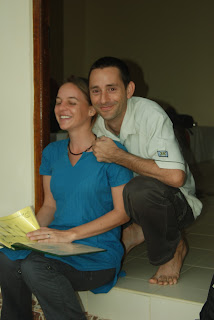Unfortunately, in my short life I have seen places in which I felt that Buddhism has become like an empty shell. Places in which the cultures and traditions that serve as vehicles for the message of Siddhartha have become so heavy with habit and obligation that they obscure rather than support the pursuit of freedom. Where prayer is a kind of begging for the granting of wishes. Where there is more of an emphasis on what we can get in this life, than what we can give.
In these places, I ask myself, "What can we do?" Or, should we do anything at all.
Often, I am seduced by the bells and incense, the fervent chanting, the pomp and circumstance of rituals that seem ancient, mysterious and sublime. In the face of such pageantry, why question anything?
 |
| Photo by Manjusri Balangoda |
But it seems to me that Buddhism is, in essence, a path of questioning. And when we stop asking honest questions, then the sincerity that lights the path of dharma goes out.
It was in this spirit of asking questions that I climbed to the apex of Sri Pada last week with three good friends. Also known as Adam's Peak, this mountain is a site of holy pilgrimage for thousands in Sri Lanka each year. It is believed that Shakyamuni Buddha came there at one point, leaving an impression of his foot on a rock at the top. Christians believe it is where Adam first came to Earth. Hindus come for many different reasons, including a veneration of the Buddha as an emanation of Shiva. And everyone, including a smattering of foreign visitors, comes to see the view.
Like many, we left our guest house in Nallathanniya at around 1:30am in order to make it to the top for sunrise. Thankfully, the climbing season has been slow to kick into full throttle, and we came on a week day which meant avoiding huge crowds and the blaring speakers making announcements all the way up. Instead, we found ourselves serenely hiking up dimly lit stone and cement stairways, and passing just a few sleepy tea shops on the way. Sri Lankan grandmothers were already climbing down in their flip-flops, which was quite amazing and somewhat reassuring.
He gave each of us coins and a lime. We climbed down to the river in the dark to wash the coins with the water and lime.
The coins are then wrapped in a white cloth and tied to our wrists with mantra.
We stopped for tea once and I snapped a shot of this little dog, who managed to follow us up most of the way. (He was far more awake than we.) We gave him a few cookies, and he turned back before the steepest ascent to the peak.
We found this perfect little frog nestled in the corner of a stone step on the way up.
At some points, the climb was so steep I felt I was going to fall backwards! We clung to the rails for support. Its hard to imagine climbing this back before they had steps and rails. But apparently many explorers of centuries past climbed it using iron chains anchored into the granite rock.
The view from the summit just before dawn was breathtaking.
My compatriots, Amanda Keissel, Manjusri Thero, and Steve Francone.
It was cold up there!
Dawn breaks, revealing a magical landscape.
At the top we took off the bands and tied them unto a rod at the base of the shrine. No photos are allowed of the shrine protecting the Buddha's print on the rock. So most of these images are of the view from the rock and the pathways around the main shrine.
Manjusri Thero with new friends. I loved this monk's pink jacket!!! We first met him in Kandy at the Temple of the Tooth, and he followed the same pilgrimage circuit up Adam Peak the next day.
After a blissful stay and hot breakfast at the top, we began our descent down the many, many steps. Only this time, we could see them.
Always good to fuel up on bananas, provided by our beloved monk.
The tradition of unwinding string during the climb causes many layers of gauzy cotton thread to accumulate up the sides of the trail, like a massive spider web to the top.
Demonstrating the Spiderman mudra with the sacred thread. (Photos by MT)
Here you can just barely see the little town where we began our hike, to the lower left of the lake. That's how far we came.
Construction materials are carried up for seasonal buildings. (Photo by MT)
These trinket shops amazed me. This one reminded me of an old children's book about a man selling an enormous stack of hats.
Back at the beginning.
Giant hornet nests hang from a tree with Sri Pada in the distance.
 |
| Photo by Manjusri Balangoda |
























































